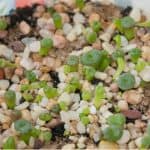Last updated on March 25th, 2022
Our site is reader supported, this means we may earn a small commission from Amazon and other affiliates when you buy through links on our site.
If you are growing succulents it’s important to protect them during the winter. Most succulents are very strong plants, especially those sold as rockery plants and many can be grown inside or outside. They do very well against any drought because they store water in their thick and stunning leaves. However, they do not fare well when the weather turns cold, wet and damp.
If you are growing succulents in the UK, even if you live in a particularly warm region, it won’t necessarily be compared to the native environment succulents are accustomed to. Therefore, if you are growing your succulents outdoors it’s important that you prepare them for winter.
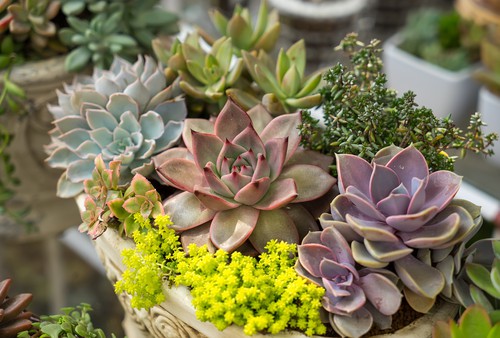
Overwintering container succulents
The easiest way to protect your succulents is to grow them in containers. Even if you leave them outside for spring and summer, you can help them to live through the winter by just moving the container into an area that is protected against frost but still has access to light. At the very least you can move the containers to a sheltered spot in your garden where they get protection against the wind, such as against a wall or fence.
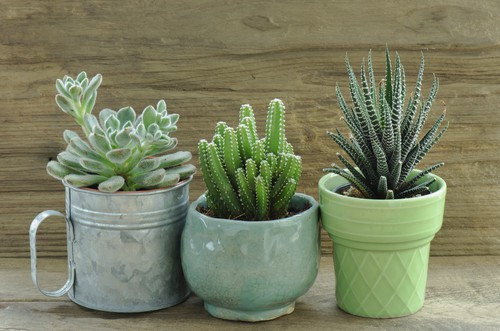
Bring more tender succulents inside your home for winter
Growing in a container affords succulents more protection against the potential for frost damage as well, compared to succulents grown in the ground. If you have container-grown succulents that are more tender, usually varieties you have purchased as houseplants, for example, aloe vera, you can move the containers inside for the winter and then bring them back outside once the threat of frost is over.
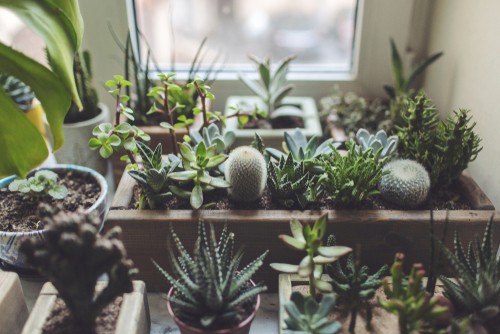
What if you don’t have a greenhouse or windowsill facing south?
Things get slightly more complicated if you don’t have a greenhouse, warm room, or windowsill facing south for your plants. If this isn’t possible, you need to move your sun-loving succulents somewhere they will get as much sun as possible. Any window is better than no window at all.
Remember that the whole point of moving the plants is to tackle one of the two main considerations for overwintering your succulents, and that is access to adequate light. As the days get shorter and the amount of sunlight decreases you need to provide your succulents with as much access to light as possible. And again, any amount of access is better than no access.
Learn more about growing succulents from seed by clicking here
Watering succulents that are being overwintered
Water is the second consideration. Low sunlight and any wet or soggy roots are just a recipe for disaster and will literally rot your succulent to death. This is why it is so important to move your plant indoors so that you can better control the moisture levels. If you can’t move them indoors you need to protect them against rainwater so that the roots don’t get waterlogged.
Of course, if you do move your succulents inside be mindful of the fact that central heating inside your home, or even regular use of a fireplace, can make your house much warmer than the outdoors and you might have to give a drop or two of water if your succulent starts looking parched.
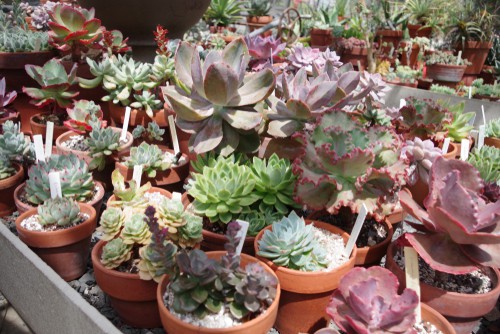
Overwintering succulents in a greenhouse
A greenhouse is ideal because of its ability to control temperatures but an unheated loft room with windows is equally useful if you are storing your succulents inside your home. Why? Because of the high temperatures that you will very likely sustain in your home throughout the winter can be so high that they prevent your succulent from going into dormancy.
The slightly cooler temperatures of a greenhouse or an attic space will encourage dormancy. Dormancy is important during the winter because it will slow down the growth rate and prevent the succulents from stretching significantly because of the lower levels of light.
Tip:
Pay attention to air circulation. You want to make sure that you don’t crowd your succulents and that they have enough space to breathe, otherwise it will encourage pests and diseases. Just because they are inside a greenhouse or inside your home for the winter doesn’t mean you should ignore them. Always check on the health of your succulents, remove any yellowing or dead parts as soon as you notice them. Clean up any fallen debris, check the roots for signs of pests or root rot. The more often you can do this over winter, the more likely it is that you will pick up on signs of trouble early on before they worsen.
Variety Matters
The variety of succulents you have will play a big role in what you have to do over winter. There are literally thousands of varieties of succulents and some of them are very active during the winter. If you are growing a variety which is active in the winter, common examples include aeoniums, you will need to water it more frequently to help it during its growth phases.
What about rockery plants?
It’s also worth noting that if you grow rockery plants, some of which are succulents. If they are grown in the ground in well-drained soil, they should be just fine on their own with no extra protection because they are very hardy.
Image credits – Shutterstock.com

